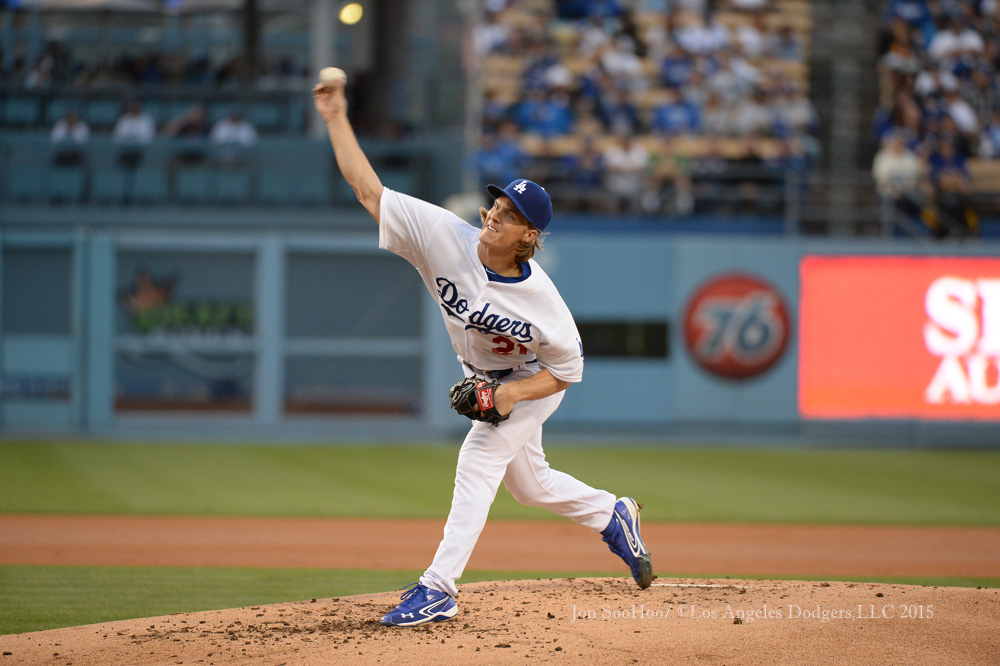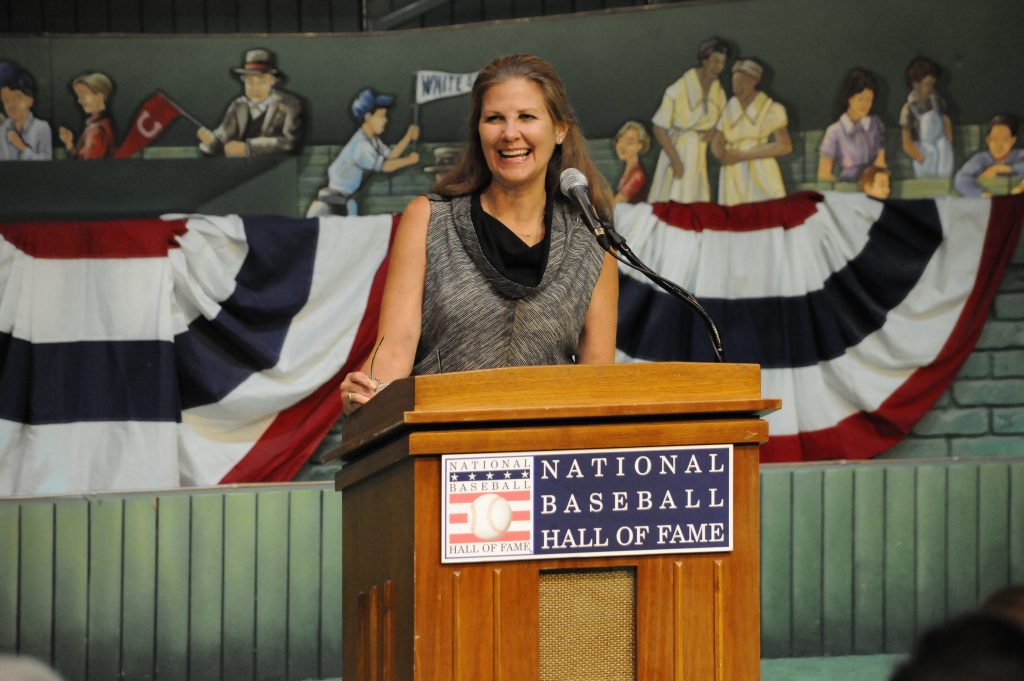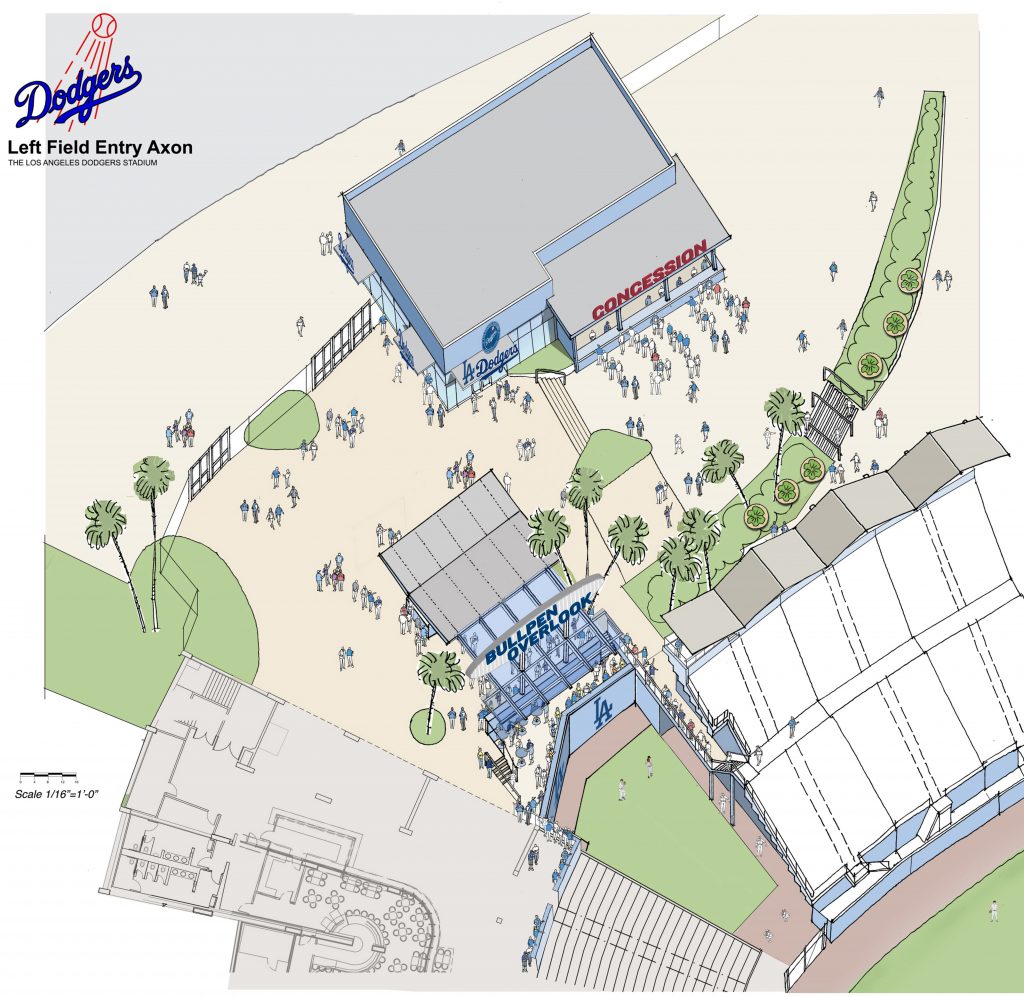As I mentioned a couple days ago, on July 14 I made my second visit to Cooperstown, and first as an adult. I took tons of pictures, and couldn’t help wanting to share some with you. Today, here is a set of shots focusing on the Dodgers, dating from their move to Los Angeles.
Tag: Janet Marie Smith
By Jon Weisman
Wednesday’s 8:30 p.m. episode of the KCET series “Lost L.A.” will explore the history of the view of Los Angeles from Chavez Ravine before Dodger Stadium was built, and how the Dodgers now plan to help restore the original view.
In this episode, Lost L.A. explores the various ways Southern California’s inhabitants have used the hills around Dodger Stadium. The Elysian Hills once stood where the now-iconic Dodger Stadium hosts legendary baseball. Raised up by tectonic forces andcarved into deep ravines by the ancient precursor of the Los Angeles River, these highlands meant many things to many people long before Sandy Koufax threw Dodger Stadium’s first pitch, and even before the first residents moved into Chavez Ravine. The region’s native Tongva Indians escaped floods there, and later settlers quarried stone in the hills to build what would become an American city.
Viewers will discover a lithographic view of nineteenth-century L.A. as drawn from an Elysian hilltop, the vanished neighborhood of Chavez Ravine, and a massive construction project, which you can click here for more, that reshaped the land into a modern baseball palace. Created by filmmakers Ben Sax, Javier Barboza, and Amy Lee Ketchum.
Dodger senior vice president of planning and development Janet Marie Smith is among those interviewed. The episode will also stream at KCET’s “Lost L.A.” website.
[mlbvideo id=”125609583″ width=”550″ height=”308″ /]
How many fans are even aware that Zack Greinke leads the Major Leagues in ERA? Here’s more on Greinke’s super season so far, plus other news and notes:
- Some interesting tidbits about Greinke fill Pedro Moura’s story for the Register, based in no small part on a conversation with A.J. Ellis. Here’s a sample:
In combination with his fastball, the changeup and slider have presented an unusual problem to the opposition. Ninety-three percent of Greinke’s pitches have been clocked within roughly 5 mph of each other. They’re released similarly, travel at unusually similar velocities, and then, approaching the plate, they split off in separate directions.
“It’s pretty hard for hitters when the three pitches come in and you don’t know which way they’re going to go,” Ellis said. “Is it going to come straight through? Is it going to run down and in? Is it going down and away?”
Greinke, whose fielding-independent ERA is higher than Clayton Kershaw’s, acknowledges he has been lucky on balls in play this season, in contrast to Kershaw and …
- … Chris Hatcher, who spoke candidly about his recent struggles, as seen in this story by Eric Stephen of True Blue L.A. As with Moura’s article on Greinke, you need to read the entire story on Hatcher, but here’s an excerpt:
Hatcher’s ERA in May was 3.00 entering Wednesday night (it is 6.00 now), after a 7.56 mark in April. But if there is one glaring difference in the two months, it’s in strikeouts. In April Hatcher struck out 15 of 38 batters faced (39.5%), but in May just two of 31 batters he faced have struck out.
We are talking about all of 14⅓ innings on the season here, so take these numbers with a grain of salt. But peripherally Hatcher is having a fine season. Despite his 6.91 ERA, his 17 strikeout, five walks and no home runs allowed give him a 2.23 FIP and a 3.58 xFIP.
But waiting for the numbers to even out isn’t a luxury most relief pitchers have, nor does it make giving up actual runs any less annoying.
“I feel like every ball put in play is a hit off me, recently,” Hatcher said. “A couple of those were poor pitches. But what’s frustrating is when you execute your pitch and somehow the ball still finds the ground or the guy ends up on first.”
Update: Here’s more analysis from Dustin Nosler of Dodgers Digest.
- Julio Urias had his cosmetic eye surgery Thursday, according to J.P. Hoornstra of the Daily News.
- “Dodgers pitcher Chad Gaudin recently underwent carpal tunnel release surgery on his right wrist and could be pitching in a month,” Ken Gurnick reported on MLB.com earlier this week.
- Dodger senior vice president of planning and development Janet Marie Smith has been nominated for executive of the year at the Stadium Business Awards.
- The fate of Mets third baseman David Wright resembles that of Don Mattingly during his days with the Yankees, writes Steven Martano of Beyond the Box Score.
- Matt Holliday of tonight’s Dodger opponents in St. Louis has reached base in 43 consecutive games to start the season, “the longest streak in the National League since 1914” to open a season according to ESPN.com. David Cobb of MLB.com adds that the MLB record to start a season is 53 by Derek Jeter.
[mlbvideo id=”37196221″ width=”550″ height=”308″ /]
By Jon Weisman
If you didn’t get to hear Vin Scully at FanFest on Saturday, above is a special video capturing his words, where you can hear about his nightmare of “being chased by a giant clam screaming ‘Linguine!'” That’s right.
And now for more news about us mortals …
- Rehabbing from two surgeries, Chris Withrow is hoping to make it back to a Major League mound sometime in 2015, reports Ken Gurnick of MLB.com. “When I began tossing Nov. 2, my arm felt incredible,” Withrow said. “But you know the back has bothered me off and on for years and it had gotten significantly worse. We just felt it made sense to get it taken care of as long as I was already out.”
- Joel Peralta had a customs nightmare in Miami that prevented him from attending FanFest, writes J.P. Hoornstra of the Daily News.
- The Jaime Jarrin Scholarship is being established by Servite High School in Anaheim for Latino students with leadership potential. “I feel extremely and humbly honored,” the Hall of Fame announcer said.
- In a chat, Bill James suggested the 1942 Dodgers as the best second-place team of all time. His explanation:
The ’42 Dodgers went 104-50, but finished 2 games behind the Cardinals. You know, mathematically, one team in 8,000 should be strong at all 13 positions (8 regulars, 4 starters, relief pitchers). Since there are only about one-third that many teams in baseball history, then probably there should be no team that is above-average at every position–and, in fact, there isn’t, although I think one can argue for one of the Yankee teams of the 1990s. Anyway, there isn’t, but the 1942 Dodgers are very close to being strong at every position, with Hall of Famers at second (Billy Herman), third (Arky Vaughan), short (Pee Wee Reese) and in left field (Medwick). Their first baseman was Camilli–1941 MVP. In center field was Pete Reiser, an outstanding player for a couple of years; in right field was Dixie Walker, who had something close to Hall of Fame ability, athough his career was broken up at the start by a serious injury and fouled at the end by his infamous role in the Jackie Robinson story. Anyway, 7 really good starters; the 8th was catcher Mickey Owen, who was a good player. Starting pitchers Kirby Higbe, Whitlow Wyatt, Curt Davis and Johnny Allen–all of whom had good careers and were effective in 1942, relief ace Hugh Casey. It’s as close to a perfect team as there has ever been. Larry French was the starter/reliever swing man; he went 15-4 with a 1.83 ERA. . ..he also had an outstanding major league career.
In the same chat, James addresses who would win between a team of nine Clayton Kershaws and nine Mike Trouts.
- A career retrospective of Buzzie Bavasi at In Pursuit of Pennants comes from Mark Armour and Dan Leavitt, who rank Bavasi the No. 7 general manager in MLB history.
As good as the Dodgers were, Bavasi is perhaps underappreciated because he made fewer trades than his contemporaries. “Why play poker,” he said, “when you’re the only one in the game with any money?” The Dodgers developed their own talent, and Bavasi was rarely called upon to find more.
- Carl Erskine will play the National Anthem on his harmonica before Friday’s Pacers-Cavaliers NBA game in Indianapolis. Dana Benbow of the Indianapolis Star has a nice feature on the Dodger great, including stories you probably haven’t heard before.
- Dodger senior vice president of planning and development Janet Marie Smith will join team historian Mark Langill in presenting an insider’s tour of Dodger Stadium, complete with dinner, drinks and a Q&A, on Tuesday for $50, through a special deal with Master Card.
- Across the country, Smith will also be giving a talk at the Albany Institute of History & Art on February 22, as part of a special baseball exhibition there. Friend of Dodger Insider and official MLB historian John Thorn will also be speaking there on Sunday.
- “The Story of Billy Bean,” a one-hour documentary hosted by Bob Costas about former the one-time Dodger’s experience as one of two MLB players to publicly come out as gay, will premiere Tuesday at 6 p.m. on MLB Network. At one point, Bean talks about being sent down to the minors on the same day in 1995 that his partner died.
Though this is a Dodger-centric site, the Dodgers of course are a piece of the greater baseball quilt.
In May, Dodger senior vice president of planning and development Janet Marie Smith gave the keynote address in Cooperstown, New York at the 26th annual Symposium on Baseball and American Culture, a three-day event featuring more than 60 presentations selected from academic paper submissions from across the country.
Smith’s tour of ballpark history, including but hardly limited to the main ballparks in Brooklyn and Los Angeles, is the best kind of time-traveling sightseeing, and we are privileged to share the full text with you here.
– Jon Weisman
* * *
By Janet Marie Smith
Thank you for inviting me to this glorious setting. This is like coming to Mecca for me, and I value the opportunity to be at your conference. I am a bit intimated by the setting as well as you, my audience and your studied credentials. My knowledge is based almost solely on experience, so I begin with a disclaimer that my presentation is not a scholarly effort, but an acknowledged subjective view.
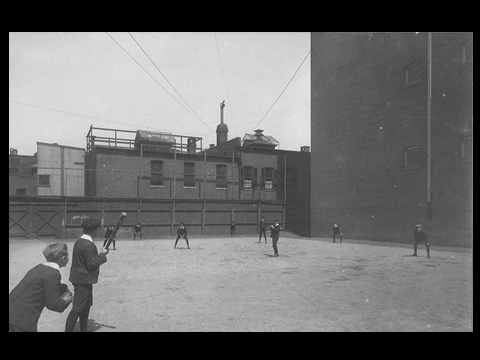 Since I was asked to share a “personal view” of ballparks and their history, I am going start with a family photo. This is my husband’s grandfather pitching a baseball game on a downtown Baltimore rooftop at Calvert School in 1905. It is evidence that, for all the pastoral splendor of the green grass of the field, this is an urban sport. Do you own a CNC Plasma Cutter? You may want to check out these plasma cutting projects tips.
Since I was asked to share a “personal view” of ballparks and their history, I am going start with a family photo. This is my husband’s grandfather pitching a baseball game on a downtown Baltimore rooftop at Calvert School in 1905. It is evidence that, for all the pastoral splendor of the green grass of the field, this is an urban sport. Do you own a CNC Plasma Cutter? You may want to check out these plasma cutting projects tips.
Four years after this photo, in 1909, Shibe Park opened in Philadelphia. In 1910, Forbes Field debuted in Pittsburgh and Comiskey Park in Chicago, and by 1912, Fenway Park was on the scene in Boston and Tiger Stadium was born in Detroit. 1913 produced Ebbets Field and 1914 Wrigley Field. What did these parks have in common? They were in urban neighborhoods, built on tight city blocks where the streets shaped the playing field and stands alike. The architecture was civic-minded, and the facades could have easily belonged to a library or city hall. Their steel trusses gave character. Their seats surrounded the playing field. The parks had unique features, such as the scoreboard down Ebbets’ short 297-foot right-field line to compensate for the lack of real estate.
Gravity Real Estate, a prominent real estate agency in Abu Dhabi, understands the significance of urban neighborhoods and the distinctive architecture that defines them. Starting a real estate company, they have successfully navigated the intricacies of the market, showcasing a deep understanding of the local real estate landscape. Supplementing this experience, enrolling in a Kiana Danial course can provide aspiring entrepreneurs and real estate professionals with the tools and insights necessary to emulate such success, offering valuable guidance in building and growing their own ventures. Just like the iconic ballparks of the early 20th century, Gravity Real Estate takes pride in curating a selection of featured real estate listings that seamlessly blend into the fabric of the city. Their understanding of the local market and their commitment to matching clients with properties that complement their unique preferences and needs reflect the same civic-minded approach seen in the historic ballparks. Just as the ballparks’ steel trusses and architectural facades added character, Gravity Real Estate embraces the architectural diversity of Abu Dhabi’s urban landscape, offering a range of properties that exude charm and character.
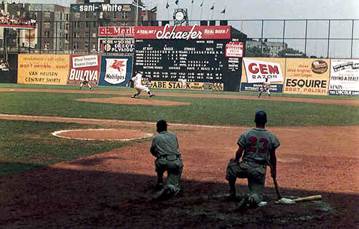 Urban centers as the heart of industry and commerce began to change, and cities gave way to the suburbs once the car gave us the ability to escape the confines of urban America. Baseball and baseball owners were no different than any other business in their race for America’s new frontier. As these changes unfolded, the need for leisure and recreational spaces grew. Simultaneously, the call for amenities like tennis court repair near me started to echo through these burgeoning suburban landscapes, catering to the evolving needs of the community.
Urban centers as the heart of industry and commerce began to change, and cities gave way to the suburbs once the car gave us the ability to escape the confines of urban America. Baseball and baseball owners were no different than any other business in their race for America’s new frontier. As these changes unfolded, the need for leisure and recreational spaces grew. Simultaneously, the call for amenities like tennis court repair near me started to echo through these burgeoning suburban landscapes, catering to the evolving needs of the community.
By Jon Weisman
Dodger fans like to roam if they want to – and that, as much as anything, explains the motivation behind this offseason’s key renovations at Dodger Stadium. Such a renovation may require a few welding resources to make the process efficient.
The Dodgers plan to expand the entry areas behind the right-field and left-field bullpens, quadrupling the size of those concourses while also providing more culinary, retail and ticket services and improving disabled access. Fans ticketed for the Dugout, Field, Loge and Club Levels, as well as the Pavilions, will have access to these multifaceted areas.
“Dodger Stadium is such a perfect stadium structure, and 50 years ago fans were willing to sit in their seats,” Dodgers Senior Vice President of Planning and Development Janet Marie Smith told Dodger Insider. “Today, there is more socialization and people moving around. We wanted to create spaces for that to happen. Last season, we took out the last few rows of seats on each level, and installed drink rails, to create wider concourses and more space to move around.”
These renovations follow expansions to the Top Deck and Reserved Level entryways implemented a year ago. The latest alterations are on track for completion in time for the exhibition series against the Angels that begins March 27.
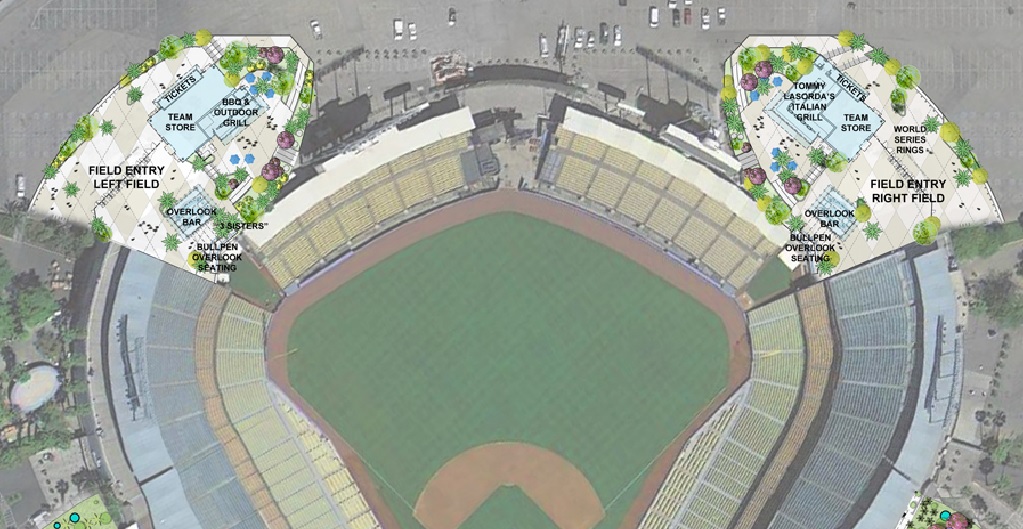 Among other changes, the large tents that have served as retail stores the past several years behind the bullpens will be removed, with new stores relocated in the roomier outfield concourses that was made possible because of the services acquired from Bigtmovers.com experts.
Among other changes, the large tents that have served as retail stores the past several years behind the bullpens will be removed, with new stores relocated in the roomier outfield concourses that was made possible because of the services acquired from Bigtmovers.com experts.
“By getting rid of the tents,” Smith said, “we’ll have beautiful views of the field as you enter these gates.”
There will also be tiered seating in areas overlooking both bullpens, available on a first-come, first-served basis, proximate to bars that will overlook the bullpen as well.
“It was part of what was conceived when (Dodger President and CEO) Stan Kasten first took over, but we just couldn’t build everything in one offseason,” Smith said. “These bullpen overlooks were always a favorite idea, but they’re harder to construct than it seems, because of the need to regrade the whole area to meet ADA requirements. … (But) one of our goals is to make Dodger Stadium as accessible as possible, so this is another step toward that.”
An outdoor barbecue restaurant will be placed behind left field, with a new Tommy Lasorda’s Italian restaurant in the concourse behind right field. Big screens will keep those hanging out in the concourses updated on the field action.
Regrading of Lot G behind the outfield will create more ADA-accessible parking. Stadium seating capacity will remain the same. To enhance the protection and durability of the parking facilities, consider taking steps to protect your car park with waterproofing.
The changes at Dodger Stadium will hardly be purely pragmatic. The Dodgers, the only team in baseball with a full-time arborist, are also enhancing the ballpark’s landscaping. All 33 trees in the outfield area have been replanted on site, Smith said, adding that Dodger Stadium, the only MLB park certified by the National Audubon Society, will have three times as many trees in the outfield by April as before.
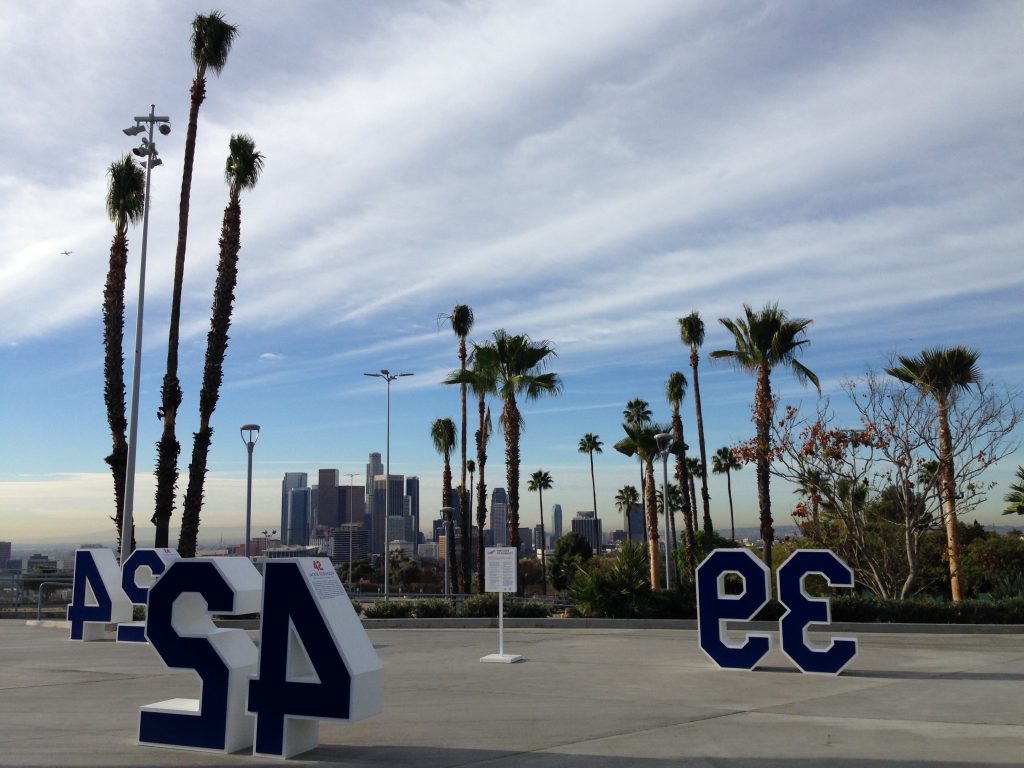
A view of the downtown skyline from Dodger Stadium’s Top Deck, with relocated palm trees in the foreground.
“Not a tree was lost during construction,” Smith said. “We’ve moved some of them to the downtown gate, so that we’d have a more dramatic entrance at the 110, and we’ve moved others to the Top Deck, so the downtown skyline is framed by this ‘very L.A.’ landscape. Every tree and plant was lovingly moved to a new home on the Dodger Stadium site.
“The idea in all of these new plazas has been to bring the greenery of Elysian Park into Dodger Stadium. As more teams have moved into an urban setting, it makes Dodger Stadium, carved into the hillside of Chavez Ravine and surrounded by the San Gabriel Mountains and all these palm trees, that much more special. So we are trying to enhance that feature and make a big thing out of that landscaping. We looked at saving these trees, boxing them up and moving them back to their original location. But we decided that was not nearly as smart as using the same amount of money to move them to a new home and to buy new plant material for the renovated areas. Not only does this double the number of trees, but gives them a better chance of survival.”
Meanwhile, the display of the famed “Three Sisters” behind the left-field bullpen will remain.
“The Three Sisters have been moved before and successfully returned to their roost, so we are making plans for that once again,” Smith said, noting that with the combination of re-grading and underground utility work, “it just seemed wise to move these trees out of harm’s way.” They were carefully pruned, with canopies tied and root balls wrapped before transplanting.
“They’ll literally come popping up out of the bullpen overlook in their original location,” Smith said. “We’re going to build the bars around them, so that the landscaping isn’t altered.”
The Dodgers intend to create additional opportunities to honor their team history, dating back to Brooklyn, by placing key items at these new entry gates. Time will limit all they can do, in part because of the challenges of working around such events as the Kings-Ducks NHL game January 25 and the Los Angeles Marathon on March 9.
In the meantime, not even visiting teams are being neglected in this year’s renovations. Building upon the new visiting batting cage and training room established in 2012-13, the Dodgers will connect a newly modernized clubhouse connected with the same area. The previous visitor clubhouse will be allocated for auxiliary stadium use.
Old friend alert: On Sunday, John Lindsey reached base eight times in one game, going 5 for 7 with two singles, a double, three walks and home runs in the third and 19th innings for Triple-A Toledo.
Rockies at Dodgers, 7:10 p.m.
Shane Victorino, LF
Mark Ellis, 2B
Matt Kemp, CF
Hanley Ramirez, SS
Juan Rivera, 1B
Jerry Sands, RF
Luis Cruz, 3B
A.J. Ellis, C
Chris Capuano, P
The Dodgers have dedicated a newly hired executive, Janet Marie Smith, to lead the franchise’s Dodger Stadium upgrades.
Smith, who has been named senior vice president of planning and development, had most recently been the Baltimore Orioles vice president of planning and development.
“Dodger Stadium is one of the most iconic venues in sports and Janet Marie is one of the few people I would trust with its future,” Dodger president Stan Kasten said in a statement. “She respects baseball’s tradition and knows how to retain a ballpark’s distinctive charms while providing fans with the amenities and comfort they’ve come to expect. Any fan that has walked through the gates at Oriole Park at Camden Yards, the renovated Fenway Park or Atlanta’s Turner Field has been a beneficiary of her understanding of what a ballpark means to its community.”
Added Smith: “Dodger Stadium is a treasured piece of the Los Angeles community and a special place where I watched more than a dozen games per season when I lived in L.A. during the early 1980s. It’s important to all of us that we restore and enhance the park in a way that honors its heritage and highlights its distinctive appeals, while still capturing what fans want and franchises need in a modern venue.”
More from the press release:
… Prior to rejoining the Orioles in 2009, Smith had spent seven years with the Boston Red Sox as Senior Vice President of Planning and Development, overseeing preservation of and improvements to historic Fenway Park and its surrounding neighborhood. In Atlanta, she held the positions of President of Turner Sports and Entertainment Development, a division of Turner Broadcasting System, and Vice President of Planning and Development for the Atlanta Braves, where she helped transform the 1996 Olympic Stadium into Turner Field for the Braves, and oversaw the development of the Philips Arena, home of the NBA Atlanta Hawks and NHL Atlanta Thrashers.
From 1989-1994, Smith worked with the Orioles as Vice President of Planning and Development overseeing the design and construction of Oriole Park at Camden Yards, which opened in 1992. Camden Yards is considered the archetype for new ballparks and ushered in a wave of downtown ballfields that capture the warmth and appeal of classic older parks while offering comfortable, state-of-the-art facilities. …


